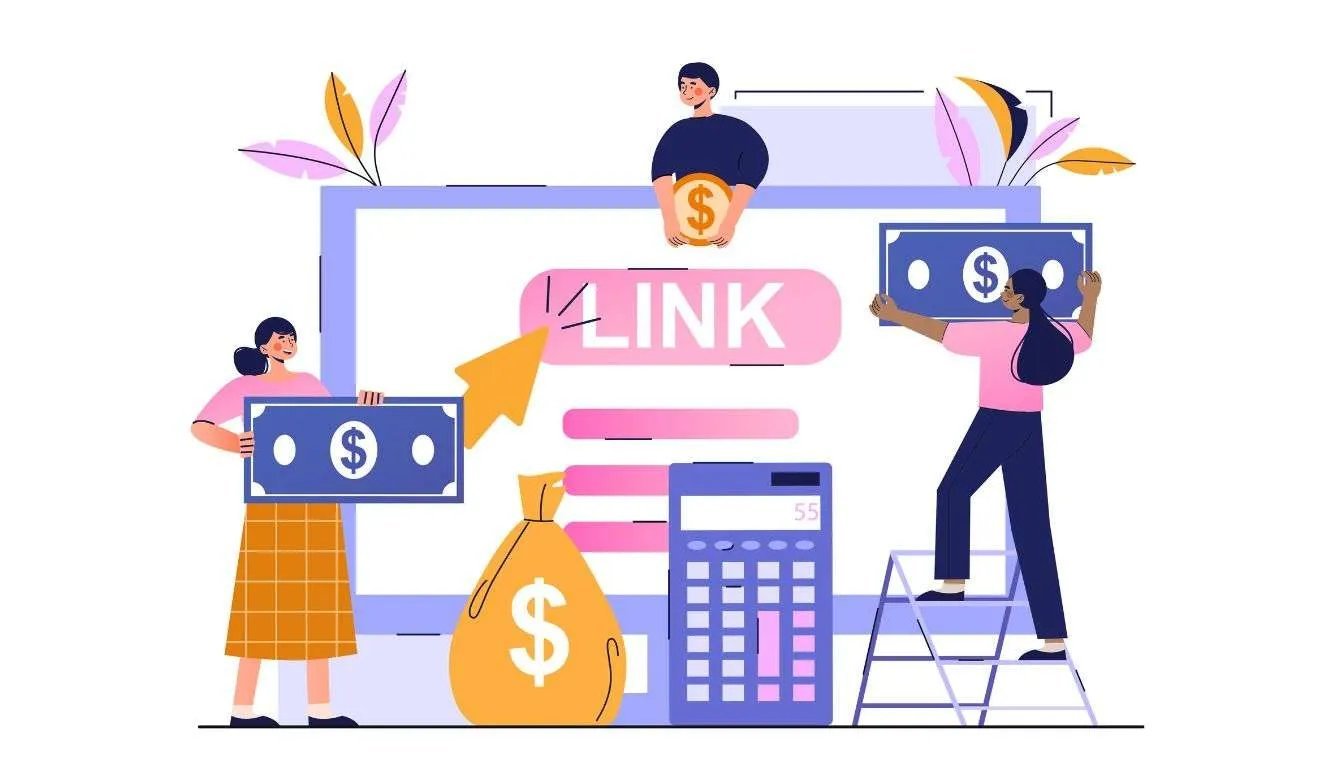Affiliate Disclaimer: Some of the links on this site are 'affiliate links.' This means if you click on the link and purchase the item, we may receive an affiliate commission.
If you’re just starting with affiliate marketing, you’re probably wondering how to promote affiliate links genuinely in a way that feels honest, not pushy. The truth is, building trust and offering value are the keys to success. People don’t want to feel like they’re being “sold to”—they want recommendations they can believe in. In this post, you’ll learn how to find that balance, connecting genuine advice with affiliate partnerships that actually help your audience.
Key Takeaways
- Prioritize Value Over Sales: Your audience can feel when they’re just being sold to. Instead of pushing products, focus on sharing helpful recommendations that solve a problem or meet a specific need. Consider how the product improves their lives and explain it in a way that resonates.
- Build Trust Through Transparency: Always disclose affiliate relationships. It’s not just a legal obligation in many places, but it also shows viewers you’re honest. You can keep it simple by saying, “This post contains affiliate links, which means I may earn a commission if you buy through them—at no extra cost to you.”
- Know and Understand Your Audience: If you promote products without knowing your audience’s preferences, the connection will feel impersonal. What are their goals, pain points, or hobbies? The better you understand them, the easier it will be to recommend things they actually need or love.
- Be Authentic in Recommendations: Only promote products or services you genuinely believe in. No one wants to hear about something that feels like a scripted sales pitch. Think of it like offering advice to a friend—share why you like the product, how it worked for you, and what they should consider before purchasing.
- Use Content That Educates and Engages: Not all affiliate marketing needs to be direct. You can create tutorials, comparisons, or “how-to” content that subtly incorporates your affiliate links. When you help your audience first, they’re likely to trust your recommendations. For inspiration on this strategy, check out Backlinko’s affiliate marketing tips.
- Experiment and Stay Flexible: Affiliate marketing isn’t one-size-fits-all. Test different approaches, whether that’s blog posts, videos, or email campaigns, to see what works best for your audience. Keep an eye on your analytics to refine your strategies. The Outbrain guide to affiliate marketing success is a great place to explore more ideas.
- Focus on Building a Long-Term Strategy: Quick wins are nice, but sustainable growth comes from consistency. Keep learning about affiliate marketing trends and updating your content to stay relevant, as highlighted in this Investopedia guide on affiliate marketing.
These takeaways are the foundation for building a genuine affiliate marketing strategy. They’ll help you connect with your audience and promote affiliate links in a way that feels both natural and trustworthy.
How to Promote Affiliate Links Genuinely
Being true to yourself is the cornerstone of building trust in affiliate marketing. It’s easy to spot when someone is just pushing a product for a paycheck, and that’s the last thing you want. The goal is to make your promotions feel like a natural part of your content, ensuring your audience feels supported, not sold to. Let’s look at a few practical strategies to promote affiliate links authentically.
Focus on Authenticity
Promote only what you know and trust—this is key when you want to include affiliate links genuinely. If you stand by a product, your audience will feel it. Don’t just include an affiliate link for the sake of making money; instead, make it personal. Have you used the product? What problem did it solve for you? Share your story.
Building trust requires consistency, so keep your audience at the forefront. Want to strengthen your connection? Respond to comments, answer questions, and engage. When you prioritize their needs, they’ll trust your recommendations more.
Here are a few simple ways to focus on authenticity:
- Only promote tools or services you’ve genuinely tested.
- Be honest about the product’s pros and cons.
- Use relatable examples that connect with your audience’s experiences. For instance, explain how a tool saved you time or improved your daily workflow.
For deeper advice on authenticity, check out this insightful guide from Pretty Links.
Create High-Value Content
Affiliate links are most effective when seamlessly woven into high-quality content. If the content doesn’t grab attention or deliver value, the links will feel intrusive. Focus on creating genuine resources that naturally integrate your links.
What type of content works best? Here are a few ideas:
- In-depth reviews – Share a detailed breakdown of the product and how it worked for you.
- Tutorials – People love learning how to use tools or software. Teach them step-by-step, showcasing how the product simplifies complex tasks.
- Case studies – Document your results using a product, giving readers tangible proof of its benefits.
When creating these, think about what your audience really wants. Are they looking to solve a problem or enhance their skills?
Don’t forget, your tone matters. Writing as if you’re talking to a friend keeps things approachable. For more creative ideas, check out GetResponse’s blog on promoting affiliate links.
Disclosure and Transparency
Transparency is non-negotiable. Your readers deserve to know when a recommendation includes affiliate links. Not only is it a legal requirement in many regions (like the FTC rules in the US), but it also shows you respect your audience.
A simple disclosure at the start of your blog or within the content (in a natural way) builds trust. For example:
Some links in this post are affiliate links. If you purchase through them, I may earn a small commission at no extra cost to you.
Consider placing your disclosure where it feels seamless, without distracting from the content. By being open about your partnerships, your audience will appreciate knowing there’s no hidden agenda.
For more on maintaining transparency, Shopify’s tips on affiliate authenticity are a fantastic resource.
To promote affiliate links genuinely, you must avoid bombarding people with offers. Your primary goal should be to help them make informed choices. Keep your recommendations genuine and you’ll most likely benefit by building income, but more importantly, you’ll gain loyalty and trust from potential buyers.
Build Genuine Relationships with Potential Buyers

Affiliate marketing is about connecting with your audience on a deeper level. When you prioritize building genuine relationships, your recommendations feel personal, making people more likely to trust your advice. By creating value and engaging personally, you position yourself as a reliable source, not just another marketer trying to make a sale. Let’s look into how you can strengthen these relationships.
Provide Consistent and Valuable Content
Your audience is counting on you for more than just one-time advice—they’re looking for long-term value. This means offering consistent, high-quality content that genuinely benefits them. Imagine your blog or channel as a friend who always shows up with the right advice at the right time. By being reliable, you become a go-to resource they depend on.
Promote affiliate links effectively by ensuring your content remains focused on providing value. Your audience will appreciate the effort, leading to increased trust and conversions.
Here’s how you can keep your content valuable and engaging when you promote affiliate links:
- Stick to a schedule: Posting regularly shows your commitment. Whether it’s weekly blog posts or bi-weekly videos, consistency builds familiarity and trust. For tips on staying consistent, consider creating a content calendar, as suggested in this guide from Quora.
- Offer unique insights: Share personal stories or experiences with the affiliate products you’re recommending. Did the product simplify a part of your life? Highlight that.
- Solve problems: Content that directly answers your audience’s questions or solves their issues is highly valued. Not sure what they’re struggling with? Take the time to listen—comments, questions, or even direct messages are goldmines for inspiration.
When you promote affiliate links, make sure to balance your sales pitches with genuine advice. This helps maintain trust and keeps your audience engaged.
Making your content valuable helps it stand out in a crowded online space. For additional insights, you can check out Flying V Group’s advice on creating valuable affiliate content.
Engage Through Personal Connections
A personal connection can make all the difference in building trust. Think of yourself as a bridge between the product and your audience—you’re helping them see why it fits their needs. Instead of being the salesperson at the door, be a friend who shares a fantastic solution.
As you focus on how to promote affiliate links, remember that engaging with your audience and responding to their feedback will strengthen your connection and increase trust.
Here are some easy ways to connect more personally when you promote affiliate links:
- Respond to comments: Nothing feels better than being acknowledged. When someone takes the time to interact with your content, show them you’re listening. Whether it’s answering a question or thanking them for feedback, this interaction strengthens the bond.
- Share personal stories: People connect with people, not faceless marketers. Share how the product helped you or someone close to you. It adds context to your recommendation and makes it relatable.
- Use direct communication: When appropriate, engage one-on-one. This could be through emails, direct messages, or even quick video replies. Building a relationship on a personal level fosters trust.
Personal connections turn occasional readers into loyal followers. If you’d like more ideas on nurturing these bonds, check out Refersion’s guide to managing affiliate relationships.
Make sure to follow up with your audience after promoting affiliate links. Ask for their feedback on the products, showing that you care about their experience and reinforcing your authenticity.
By combining valuable content with meaningful connections, you’re building a community that values your input and trusts your recommendations.
Integrate Affiliate Products Naturally
When done right, integrating affiliate products can feel like a friendly recommendation you’d share over coffee, not a hard sell. The key is maintaining trust while providing real value. Let’s explore how storytelling and strategic placement can help make your affiliate links feel natural and helpful to your audience.
Use Storytelling and Personal Experience
People connect with stories—they’re relatable, memorable, and engaging. Instead of just telling your audience what a product does, show them how it fits into your life. Imagine recommending a product to a friend. Would you list out all the features first, or share how it solved a problem for you?
Here’s how storytelling can transform your affiliate marketing:
- Start with a challenge: Share a relatable struggle or issue you’ve faced. For example, maybe you couldn’t find the right tool to organize your work, and it was causing chaos in your daily routine.
- Introduce the solution naturally: Talk about how you discovered the product and what made you give it a shot. Be honest—did you hesitate at first? What changed your mind?
- Highlight the benefits: Explain how the product worked for you in real life. Talk about the specific ways it made your life easier, better, or more enjoyable.
Integrate affiliate links into your content by focusing on storytelling. Sharing personal experiences can make your recommendations resonate better with your audience.
When you blend affiliate links into these stories, they come across as genuine, not forced. Want a closer look at how storytelling can boost your success? Take a look at The Art of Storytelling in Affiliate Marketing by Vista Social.
When You Promote Affiliate Links, Incorporate Them Strategically
Strategic placement of affiliate links is like seasoning a recipe—too little, and your audience might miss them; too much, and it leaves a bad taste. The goal is to include links in ways that feel natural and intuitive for the reader.
Here are some smart strategies:
- Add links where they make sense: If you’re writing a product review, include the affiliate link right after describing its value. In a tutorial? Link to the tool you’re demonstrating at the moment you introduce it.
- Use calls-to-action sparingly: A simple “Check out this tool here” or “Grab yours today” at the right moment can be effective, without being overbearing.
- Spread out your links: Avoid clustering affiliate links all in one spot. Spread them throughout your content where they fit contextually.
- Choose transparency over tricks: Make your links obvious and ethical. Not only is this essential for compliance in most places (like with FTC regulations), but it also improves trust with your audience.
For example, in a blog post about productivity tips, you might say, “I’ve been using this planner for the past year, and it’s a game-changer for keeping my tasks organized.” It flows naturally into the content while giving readers the option to explore further.
Want more practical ideas on placing affiliate links with purpose? Check out Travelpayouts’ guide on affiliate link placement.
By using thoughtful storytelling and strategic placement, you’ll ensure your affiliate recommendations feel effortless and honest—just like they should.
Offer Additional Value

When promoting affiliate links, offering extra value to your audience can make all the difference. Offering additional value is about sharing a product or service plus giving your readers something extra that enhances their buying experience or builds trust. By creating bonuses or hosting educational events, you’re boosting their trust in your recommendations while making them feel like they’re getting more than just a standard deal.
Create Bonuses and Incentives
Everybody loves getting something extra, and bonuses can be the key to turning interest into a purchase. Think about it: if someone is already considering a product and you present them with an irresistible bonus, it often tips the scale in your favor.
Here are some ideas for effective bonuses:
- Exclusive eBooks or Guides: Create a resource that complements the product you’re promoting. For instance, if you’re an affiliate for a budgeting app, an eBook on “Mastering Your Weekly Budget” is a logical and helpful add-on.
- Discount Codes: Partner with the brand to offer exclusive discounts to your audience. These codes boost conversions and make your readers feel like they’re getting a VIP deal.
- Access to Members-Only Content: Offer private webinars, Q&A sessions, or behind-the-scenes insights. For example, if you’re promoting a marketing tool, a webinar on “Maximizing ROI with [Tool Name]” delivers real value.
Don’t forget to make your incentives relevant to your audience. It’s like offering sprinkles with ice cream—they only work when they match the flavor.
Curious how bonuses can enhance your affiliate efforts? Check out this guide on using bonuses effectively.
Host Educational Events
Think of educational events as an opportunity to connect directly with your audience while showcasing the affiliate products you believe in. Webinars, live Q&A sessions, or workshops build trust and allow you to promote affiliate links in a non-salesy, natural way.
Here’s how to get started:
- Webinars: Host a live class where you explain the benefits of a product while sharing actionable tips. For instance, if you’re an affiliate for a graphic design tool, a webinar titled “5 Easy Ways to Design Stunning Social Media Graphics” works seamlessly.
- Live Demos: Show the product in action. Walk your audience through how to use it while addressing frequently asked questions. This adds credibility to your recommendation.
- Interactive Workshops: Get hands-on! For example, if you’re promoting a writing tool, guide attendees in creating engaging blog titles live during a session.
Educational events allow you to position yourself as an expert while offering your readers something valuable. Plus, it’s a chance to engage with your audience, answer their questions, and deepen trust. You can learn more about hosting impactful affiliate events by exploring resources like Influencer Marketing Hub’s roundup of top affiliate marketing events.
Providing value, whether through bonuses or knowledge-sharing events, can turn your affiliate marketing from transactional to transformative. People remember when they feel cared for, and offering something beyond just the deal helps you build that lasting connection.
Leverage Multiple Online Platforms

Promoting affiliate links effectively often means casting a wider net. By strategically using different platforms, you increase visibility and connect with people in spaces they already trust and value. This way, your recommendations feel like a natural extension of your helpful content. Here’s how to make the most of various online channels.
Utilize Social Media
Social media is a goldmine for affiliate marketing, offering direct engagement opportunities with audiences of all sizes. Whether you’re sharing a quick Instagram Reel, pinning a valuable Pinterest post, or hosting a live session on YouTube, every interaction can set the stage for trust and sales.
To get the best results:
- Choose platforms wisely: Start with platforms your audience already loves. Platforms like Instagram, TikTok, and YouTube are visual-heavy and great for showcasing products, while Twitter and LinkedIn work well for professional or niche content. Want tips on choosing the right platform? Check out this guide from Forbes.
- Create useful content: Share more than just the product. Offer tutorials, reviews, or tips that guide users on how to benefit from the affiliate product. For example, a 30-second TikTok explaining “5 ways to style this jacket” does a lot more than a simple affiliate link post.
- Engage consistently: Reply to your readers. Answer their questions, address concerns, or simply thank them for their comments. A little effort in building relationships goes a long way.
Feeling stuck on what to post? Check out OptinMonster’s post for inspiring examples and actionable strategies.
Craft Effective Newsletters
Newsletters are a direct, personal way to share affiliate links with an already interested audience. Done right, they can feel like a conversation with a friend rather than a sales pitch.

Here’s how to make your newsletters work for affiliate marketing:
- Focus on value first: Don’t make the email all about the sale. Instead, think about what your readers need. Are they struggling to organize their time? Send a newsletter titled “3 Simple Tools to Boost Productivity in 2024,” featuring your affiliate recommendation as one of the tools.
- Personalize and segment: Tailor content to specific audience segments based on their interests. For example, a fitness enthusiast receives workout-related recommendations, while someone into tech gets advice on productivity tools. Learn the essentials of segmentation in this guide on affiliate newsletters.
- Keep it visually appealing: Use simple layouts that highlight your content beautifully. Images, bullet points, and clear CTAs (calls to action) ensure that readers quickly understand the value you’re sharing.
Emails remain one of the most effective tools for affiliate conversions. For inspiration, explore AffiliateWP’s step-by-step guide on writing affiliate-friendly newsletters.
By mastering these tactics, you’ll be able to expand your reach and make your affiliate promotions feel natural, personal, and genuinely helpful. Whether on social media or in inboxes, your message will resonate in ways that build both trust and conversions.
Mistakes to Avoid in Affiliate Marketing
When starting out in affiliate marketing, it’s easy to fall into traps that can harm your efforts and credibility. Mistakes not only cost you time but can also erode the trust you’ve built with your audience. By knowing what to watch out for, you can stay on the right path and promote affiliate links effectively.
Choosing Irrelevant Products
Promoting products that don’t align with your audience’s needs is like trying to sell sunscreen to someone shopping for winter coats—it’s confusing and unhelpful. Your readers come to you with specific interests or problems, and if you pitch random items, they’ll stop paying attention—or worse, stop trusting your recommendations.
Here’s why this matters:
- It damages your reputation: If your audience feels you’re just trying to make money without considering their needs, they’ll stop engaging with you.
- It lowers conversions: Irrelevant products lead to wasted effort because people won’t buy something they don’t relate to or need.
Instead, focus on products that solve problems your audience is already struggling with. For instance, if your content is about productivity, promoting software tools or planners makes sense. To avoid this pitfall, make researching your audience’s preferences a top priority. For a deeper look at common errors in affiliate marketing, this guide can help you spot them early.
Neglecting Audience Needs
Think of affiliate marketing as a conversation with a friend. If your friend tells you about their struggle to save time, you wouldn’t suggest products without considering their situation, right? The same holds true for your audience. Success comes when you align product promotions with what your readers truly care about.
So, promote affiliate links by creating valuable content tailored to your audience’s needs. This will not only attract readers but will also establish you as a trusted source for their inquiries.
Why this matters:
- Missed opportunities: If you overlook what your audience wants, you’re leaving money on the table.
- Weakened trust: Recommending irrelevant or low-quality products shows you’re not listening, which erodes credibility.
Take time to understand their pain points through surveys, comment sections, or social media feedback. When you can pinpoint their concerns—whether it’s finding affordable tools or tackling everyday challenges—you’ll become their go-to resource. If you’re struggling to connect content to audience needs, this article on affiliate marketing traps may offer clarity.
Ignoring Compliance Requirements
Affiliate marketing isn’t the wild west—it’s bound by legal and ethical guidelines to protect consumers and marketers alike. Failing to follow these rules puts you at risk for hefty penalties and undermines the integrity of your work. Compliance creates trust, showing you operate transparently and ethically.
Key compliance practices to follow:
- FTC disclosures: In the US, you must clearly state when content includes affiliate links. A simple note like, “This post contains affiliate links. I may earn a commission on purchases made through these links, at no extra cost to you,” works well.
- Adhere to regional rules: For example, the GDPR in Europe requires transparency about data collection and privacy when using affiliate marketing strategies.
- Avoid misleading claims: Be honest about the product’s capabilities and features. Overhyping can lead to distrust or even legal action.
Staying compliant doesn’t have to be overwhelming. Take small steps to review the guidelines and update your content when needed. This resource breaks down affiliate compliance essentials effectively.
Mistakes can derail even the most eager affiliate marketer, but with care and attention, you’ll build a foundation of trust and success. Stay focused on your audience, choose relevant products, and keep compliance top of mind to promote affiliate links with confidence.
Genuinely Promote Affiliate Links: Frequently Asked Questions
When you’re new to promoting affiliate links, you’ve probably got a lot of questions running through your mind. Affiliate marketing can feel like a big puzzle at first, but once you start understanding the details, things become much clearer. To help you understand the details better, here are answers to some of the most common questions beginners like you often ask.
What Is an Affiliate Link?
An affiliate link is a unique URL provided to you by an affiliate program. This link tracks any clicks or purchases made by users who visit through it, allowing you to earn a commission. Think of it like having your own customized key that unlocks earnings every time someone interacts with it. For a clearer understanding of how affiliate links work, check out this guide by We Can Track.
How Do Affiliate Commissions Work?
Most affiliate programs pay a percentage of the sale generated through your link. Depending on the product or service, this percentage can range anywhere from 5% to 70% or even higher. Some programs might offer flat-rate commissions per sale. Wondering how fair the commission is for the work you’re putting in? Review what’s standard in your niche on platforms like Awin.
Do I Need a Website to Promote Affiliate Links?
No, you don’t necessarily need a website to start affiliate marketing, but having one can help provide a solid platform for your content. You can also promote links through social media, email newsletters, YouTube videos, or even podcasts. The key is picking the platform where your target audience hangs out the most. Learn more about starting without a website in this Affiliate Marketing FAQ.
How Many Affiliate Links Should I Use in My Content?
It’s about balance. Adding too many links can overwhelm your audience and make your content look overly sales-driven. Instead, aim for quality over quantity by only including links where they fit naturally and provide genuine value to the reader.
Is Affiliate Marketing Legal?
Yes, affiliate marketing is perfectly legal—as long as you follow the rules. One of the main legal requirements is to disclose your affiliate relationships to your audience. For example, in the U.S., the FTC requires clear and conspicuous disclosure. Not sure how to disclose properly? This guide offers tips on staying compliant.
How Can I Track My Affiliate Performance?
Most affiliate programs come with dashboard tools that allow you to monitor clicks, conversions, and commission earnings in real time. Some marketers also use third-party trackers to analyze broader data. Keeping an eye on your metrics helps you understand what works and what doesn’t. For details on tracking and analytics, you can explore this blog by PartnerCentric.
Can You Do Affiliate Marketing Full-Time?
Absolutely! Many people turn affiliate marketing into a full-time income stream. However, remember that success often requires consistency and experimentation. It’s not a “get rich quick” option, but it can be deeply rewarding over time if done thoughtfully.
By answering these questions, you should feel more confident about starting your affiliate marketing pursuits. As you continue learning, more specific questions might pop up, and that’s okay—curiosity is part of the learning process! Keep asking, testing, and growing.
Final Thoughts
In order to promote affiliate links genuinely, you must build trust with your audience by being honest, helpful, and authentic. When you focus on value over sales, your recommendations feel more like friendly advice than a pitch. Transparency, thoughtful product selection, and engaging content make all the difference in connecting with your readers and earning their trust.
Start small, choose products that align with your content, and keep your audience’s needs at the heart of everything you do. Approach affiliate marketing as a long-term way to help, not just a way to earn. By staying genuine, you’ll grow your income and create loyal connections that last.
Now, it’s your turn—what’s the first idea you’ll test to promote affiliate links in a genuine way?

